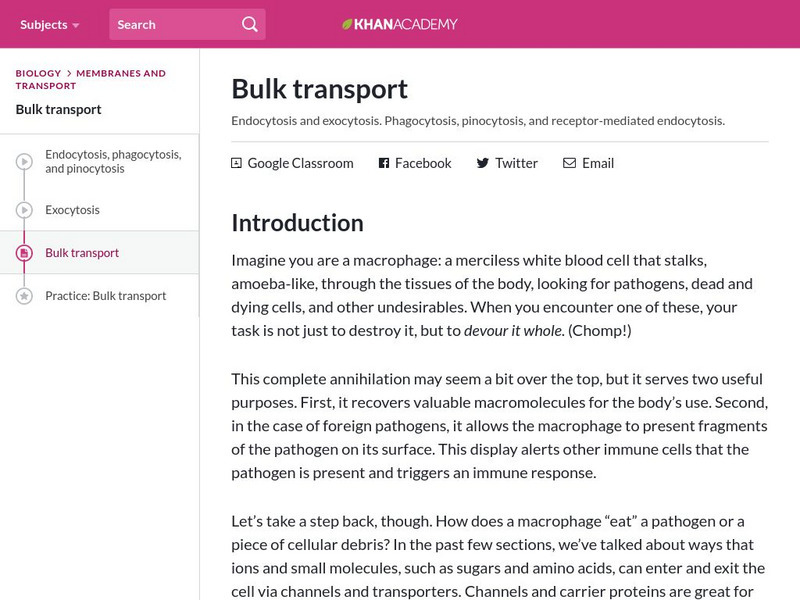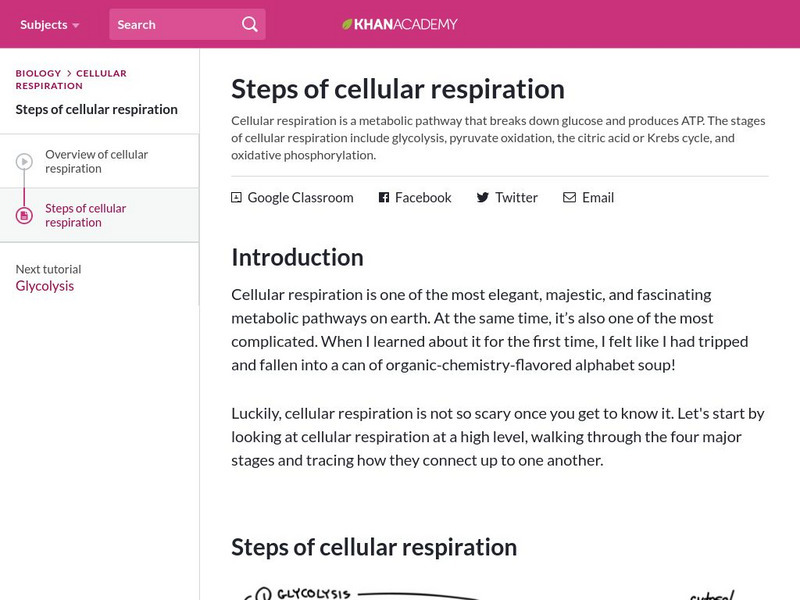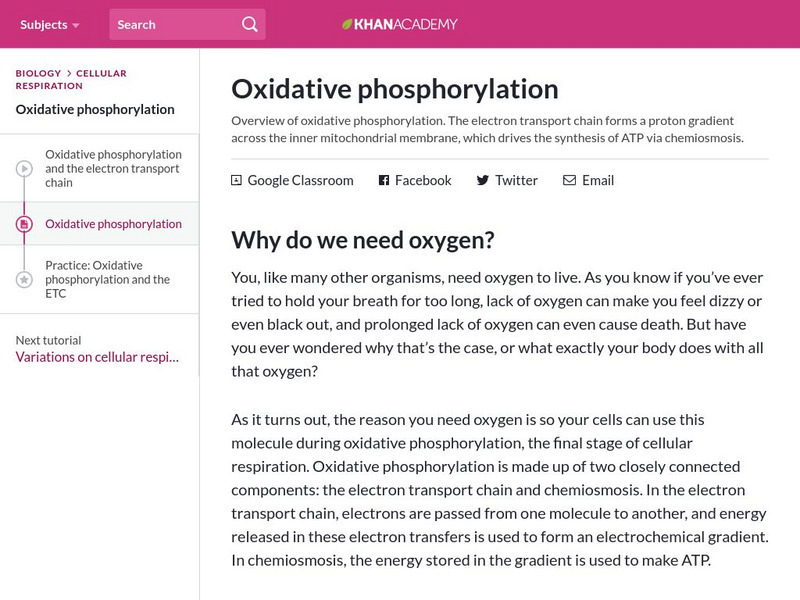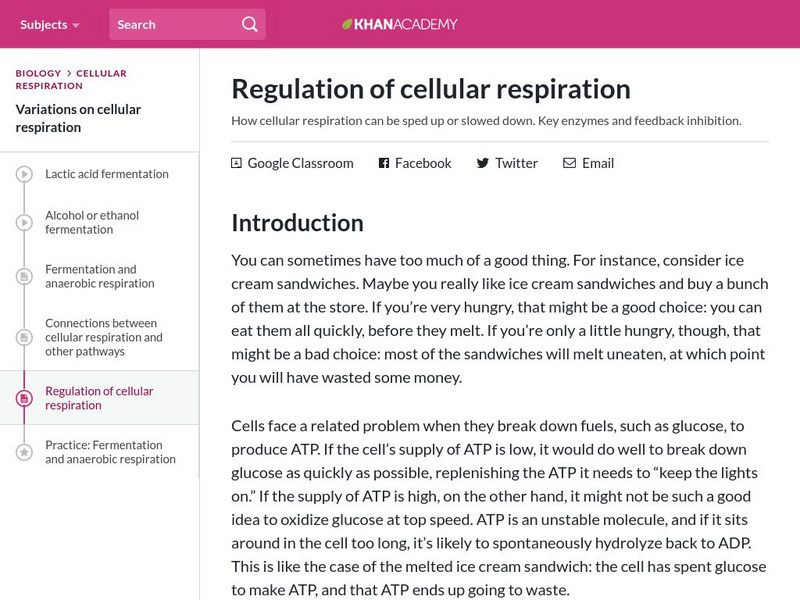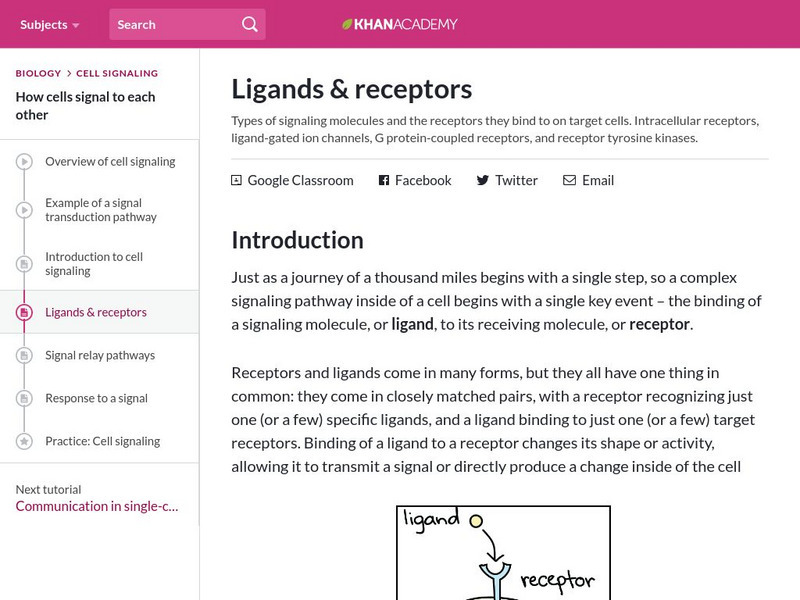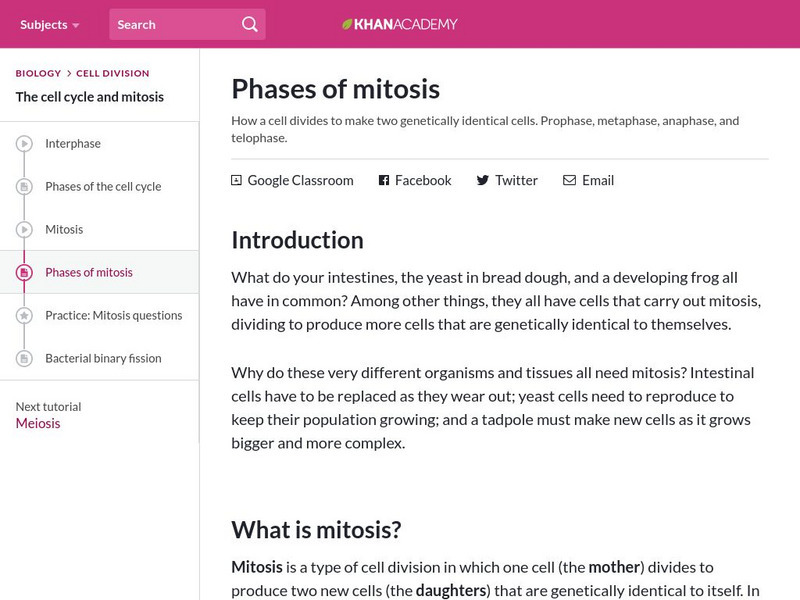Hi, what do you want to do?
Khan Academy
Khan Academy: Diffusion and Passive Transport
Learn about membrane permeability and facilitated diffusion (including channels and carrier proteins).
Khan Academy
Khan Academy: Active Transport
Learn about gradients of molecules that exist across cell membranes, how they can help or hinder transport, and how active transport mechanisms allow molecules to move against their gradients.
Khan Academy
Khan Academy: Bulk Transport
Article looks at the different modes of bulk transport: phagocytosis, pinocytosis, receptor-mediated endocytosis, and exocytosis.
Khan Academy
Khan Academy: Introduction to Cellular Respiration and Redox
Introduction to redox in cellular respiration. Provides an overview of how cells break down fuels and looks at some of the electron transfer reactions that are key to this process.
Khan Academy
Khan Academy: Steps of Cellular Respiration
Resource walks you through the four major stages of cellular respiration which include glycolysis, pyruvate oxidation, the citric acid or Krebs cycle, and oxidative phosphorylation and traces how they connect up to one another.
Khan Academy
Khan Academy: Glycolysis
Provides an overview of glycolysis which is the first step in the breakdown of glucose to extract energy for cellular metabolism. The article discusses in detail its two main phases: the energy-requiring phase and the energy-releasing...
Khan Academy
Khan Academy: The Citric Acid Cycle
Resource provides an overview of the steps of the citric acid cycle, also known as the Krebs cycle or tricarboxylic acid (TCA) cycle. Gives detailed examples of how this amazing cycle works and discusses the products of the cycle.
Khan Academy
Khan Academy: Oxidative Phosphorylation
Article presents an in-depth overview of oxidative phosphorylation which provides most of the ready chemical energy (ATP) used by the cells in your body.
Khan Academy
Khan Academy: Regulation of Cellular Respiration
This article investigates how cellular respiration can be sped up or slowed down in response to ATP levels and other metabolic signals.
Khan Academy
Khan Academy: Light and Photosynthetic Pigments
What is light energy? Here we'll learn about the properties of light and how pigments such as chlorophylls absorb light energy.
Khan Academy
Khan Academy: The Light Dependent Reactions
Article explores the light-dependent reactions as they take place during photosynthesis in plants. Traces how light energy is used to make ATP and NADPH and explains photosystems and electron transport chains.
Khan Academy
Khan Academy: The Calvin Cycle
Learn about the three stages of the Calvin Cycle reactions: carbon fixation, reduction, and regeneration of the starting molecule. See how the products of the light reactions, ATP and NADPH, are used to fix carbon into sugars in this cycle.
Khan Academy
Khan Academy: Photorespiration
Photorespiration is a wasteful pathway that competes with the Calvin cycle. Explore why photorespiration happens, when it's most likely to take place, and how it actually works.
Khan Academy
Khan Academy: C3, C4, and Cam Plants
Article takes a close look at how the C4 and CAM pathways help reduce photorespiration.
Khan Academy
Khan Academy: Introduction to Cell Signaling
This article examines the basic principles of how cells communicate with one another using different kinds of short- and long-range signaling.
Khan Academy
Khan Academy: Ligands & Receptors
Article looks at different types of receptors and ligands, seeing how they interact to turn information from outside the cell into a change inside the cell.
Khan Academy
Khan Academy: Signal Relay Pathways
Learn how signals are relayed inside a cell starting from the cell membrane receptor. Look at the general characteristics of intracellular signal transduction pathways, as well as some relay mechanisms commonly used in these pathways.
Khan Academy
Khan Academy: Response to a Signal
Article takes a look at examples of the different ways cells can change their behavior in response to a signal at both the "micro" and "macro" levels.
Khan Academy
Khan Academy: Cell Cell Signaling in Unicellular Organisms
Article takes a look at how unicellular organisms "chat" with one another using chemical signals. It examines yeast mating types, bacterial quorum sensing, and biofilms.
Khan Academy
Khan Academy: Chromosomes
This informative resource features an overview of genetic material: DNA, chromosomes, genomes, homologous chromosomes, sister chromatids, and haploid/diploid.
Khan Academy
Khan Academy: Phases of the Cell Cycle
Article explores the life cycle of a cell and delves into the phases of the cell cycle.
Khan Academy
Khan Academy: Phases of Mitosis
Tutorial examines how a cell divides to make two genetically identical cells and explores the four basic phases: prophase, metaphase, anaphase, and telophase.
Khan Academy
Khan Academy: Cell Cycle Checkpoints
Learn how cells use checkpoints to regulate the cell cycle. This article provides an overview of cell cycle control, outlining the factors that influence a cell's decision to pause or progress at each checkpoint.
Khan Academy
Khan Academy: Cell Cycle Regulators
This article looks at a few of the most important core cell cycle regulators: proteins called cyclins, enzymes called Cdks, and an enzyme complex called the APC/C.







